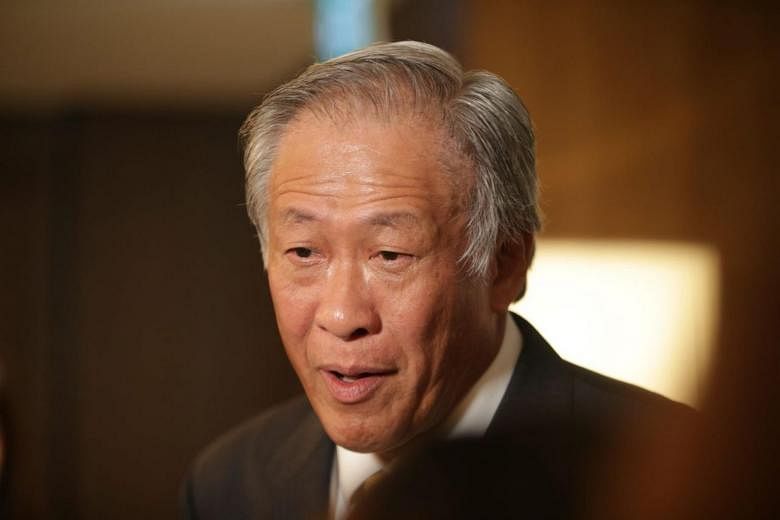SINGAPORE - An attrition rate of more than 20 per cent in the early 2000s fell to its lowest-ever of less than 3 per cent at the Defence Science and Technology Agency (DSTA) last year.
This was down to the improvement in trust and its working relationship with the Singapore Armed Forces (SAF), said Defence Minister Ng Eng Hen on Friday (Oct 25).
What he termed as strategic trust was lacking in the past, he said, but through common trials and successes, the SAF and the defence technology community have built up a deeper understanding of each other.
"Treasure this precious and productive relationship with each other, work at it, sustain it, and never once take the other for granted. For Singapore, our ops tech integration is a powerful enabler and it is our secret-edged weapon to keep Singapore safe and secure," he noted in his address at the annual Defence Technology Prize presentation ceremony held at DSTA at Depot Road.
Established in 1989, the prize is awarded to individuals and teams who have made significant technological contributions to Singapore's defence capability.
This year, it went to three teams and three individuals from organisations including DSTA and DSO National Laboratories.
While the defence technology community has made remarkable progress over the past three decades to help the SAF become a modern and professional military with a wide spectrum of capabilities, Dr Ng said neither it nor the SAF can afford to rest on their laurels.
He said that the extensive reach of social media opens another battlefront which Singapore has to defend against.
"Whether through cyber theft of secrets, information warfare or an organised persistent hybrid campaign, these are new frontiers that need to be addressed, and for which our present working structures and tempo are no longer adequate."
Citing an example from the German armed forces, which encountered a falsehood about their soldiers sexually assaulting an underage girl in Lithuania in 2017, he said: "They knew it was orchestrated, they knew it was pushed out, and they knew by whom and for what purpose. They had to respond decisively to deal with it.
"And the question to ask ourselves is against this kind of threat, do we have the command structures and troops organised that way?"
To deal with such new security challenges and maximise the use of technology, the ops-tech relationship must become closer, or even seamless, moving as one mind and one team when addressing problems, said Dr Ng.
"And I think that is the only way we can get ahead," he said, while noting this was already happening across the SAF, with its services now proactive in inviting the defence technology community to sit in when operational planning is done.
The essential ingredient for such seamless integration is trust, and the community had won the trust of its SAF counterparts, he said.
"It was not given to you, you had to earn it. And today's winners exemplify how they enhanced the security of our critical national infrastructure by delivering capable warfighting systems such as the Army's Hunter Armoured Fighting Vehicle and the Navy's Invincible-class submarines."


